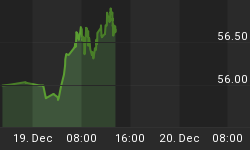
With Charles Hugh Smith & Gordon T Long
27 Minutes - 20 Slides
Charles Hugh Smith and Gordon T Long discuss what they see as the Coming Era of Pension Poverty.
To show why this happen, Charles and Gordon attempt to answer two questions:
- Why are the pensions and benefits promised to public employees unsustainable?
- Why is the Social Security System at risk?

Why are the pensions and benefits promised to public employees unsustainable?
1. Demographics: back in the day, there were 10 workers for every retiree. That slipped to 5 to 1, and it is now around 2 to 1: only two full-time workers for every retiree.
2. Low Yields in a ZIRP economy. Pension funds were based on a minimum annual investment return of 7% or more. Returns of 3% or less mean the promised pensions cannot be paid out of investment earnings -- they must be paid by higher taxes.
3. Increased risk of pension fund investments. Pension managers have compensated for low yields by shifting more of the fund's capital into high-risk investments such as junk bonds as a way of capturing higher yields. This strategy has paid off in a 'risk-on" environment but has the potential to yield catastrophic losses in a "risk-off" downturn.
4. Many public unions have exploited the system by buying political favors. Many retire at 55 and game the pension plans to retire with 90% pay based on their last year of service, which includes huge overtime pay; questionable disability claims that make their pensions tax-free, etc. This has changed the public employee pension plans from models of modest payouts to cash cows in which employees rake in $250,000 payouts upon retirement, are hired back as consultants (double dipping) and a host of other abuses.
5. Voters squeezed by stagnant incomes and steep increases in healthcare and educations costs cannot afford to pay higher local government taxes without crimping their consumption. Forcing voters to pay for public pensions with sharply higher taxes will trigger a self-reinforcing recession as consumption declines lower consumption/sales taxes, lowering local government revenues despite higher taxes.
Why is the Social Security System at risk?
1. Social Security is "pay as you go" -- the Trust Fund is a fiction, IOUs that are empty promises, not tradable securities. The deficits in Social Security must be paid with higher taxes or by selling Treasury bonds, i.e. increasing Federal debt.
2. Demographics: there are only 2 full-time workers for every Social Security/Medicare recipient.
3. Social Security is already running deficits:
Social Security Ran $47.8B Deficit in FY 2012; Disabled Workers Hit New Record in December: 8,827,795
4. Social Security is supporting an increasing number of non-retirees, i.e. disabled.
5. Demographics: the number of baby Boomers who qualify for Social Security and Medicare is set to soar--60+ million Boomers are entering these programs while the economy only supports 115 million full-time jobs.
6. Faulty actuary assumptions. When Social Security was established, it was assumed there would always be 5 workers for every retiree, people retired at 65 and that the average age at death was mid-to-late 60s. The system was not set up for people retiring at 62 and living into their 80s.















